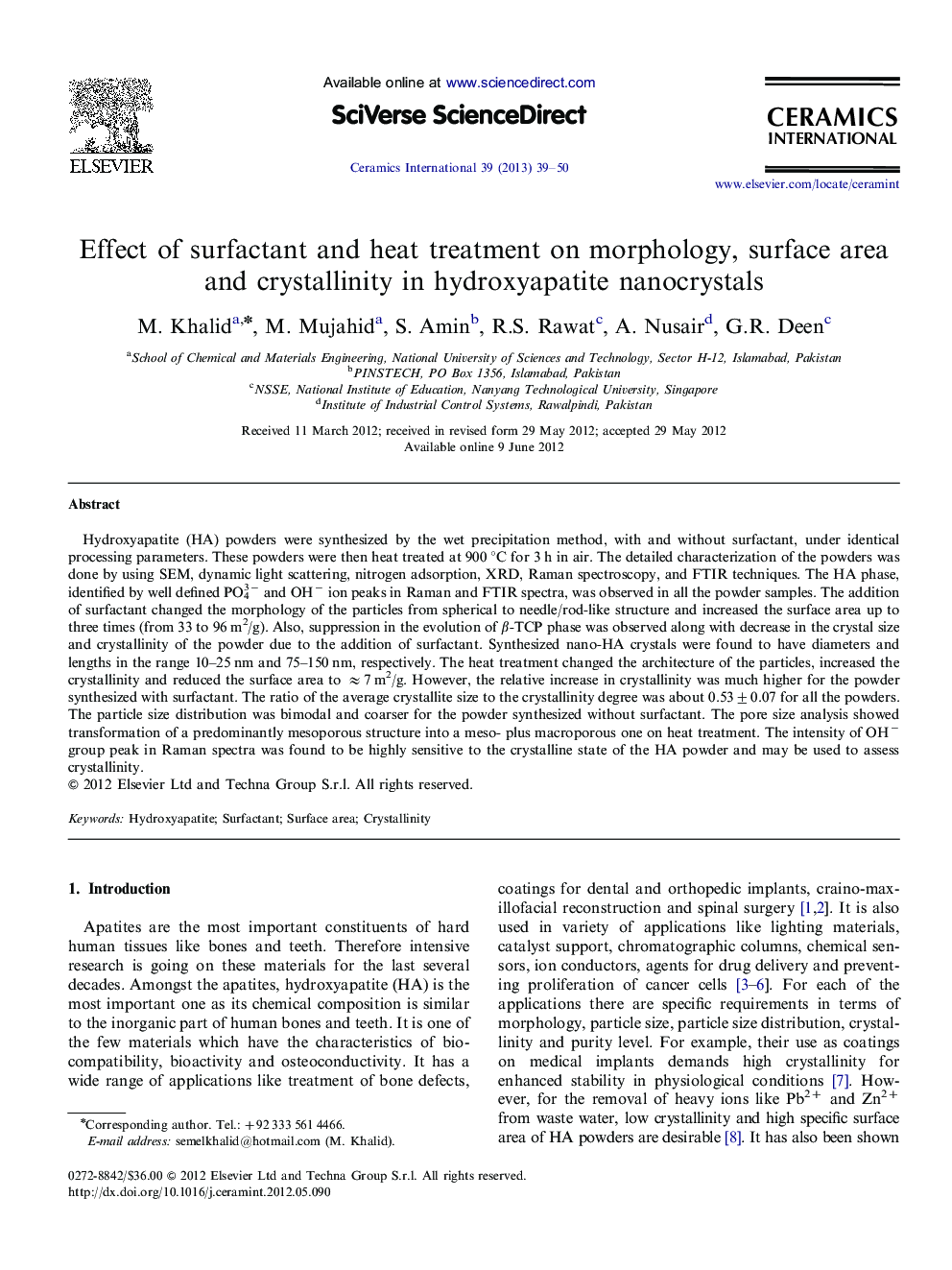| Article ID | Journal | Published Year | Pages | File Type |
|---|---|---|---|---|
| 1463430 | Ceramics International | 2013 | 12 Pages |
Hydroxyapatite (HA) powders were synthesized by the wet precipitation method, with and without surfactant, under identical processing parameters. These powders were then heat treated at 900 °C for 3 h in air. The detailed characterization of the powders was done by using SEM, dynamic light scattering, nitrogen adsorption, XRD, Raman spectroscopy, and FTIR techniques. The HA phase, identified by well defined PO43− and OH− ion peaks in Raman and FTIR spectra, was observed in all the powder samples. The addition of surfactant changed the morphology of the particles from spherical to needle/rod-like structure and increased the surface area up to three times (from 33 to 96 m2/g). Also, suppression in the evolution of β-TCP phase was observed along with decrease in the crystal size and crystallinity of the powder due to the addition of surfactant. Synthesized nano-HA crystals were found to have diameters and lengths in the range 10–25 nm and 75–150 nm, respectively. The heat treatment changed the architecture of the particles, increased the crystallinity and reduced the surface area to ≈7 m2/g. However, the relative increase in crystallinity was much higher for the powder synthesized with surfactant. The ratio of the average crystallite size to the crystallinity degree was about 0.53±0.07 for all the powders. The particle size distribution was bimodal and coarser for the powder synthesized without surfactant. The pore size analysis showed transformation of a predominantly mesoporous structure into a meso- plus macroporous one on heat treatment. The intensity of OH− group peak in Raman spectra was found to be highly sensitive to the crystalline state of the HA powder and may be used to assess crystallinity.
